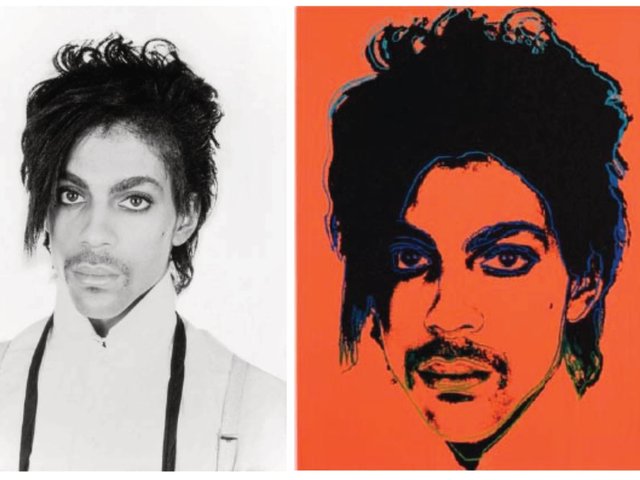The visual artist should, in a way, feel flattered by the censorship laws. They show a primitive fear and dread at the fearful magic of their work. The controversy surrounding Tate Modern’s decision to remove Richard Prince’s Spiritual America, 1983, from “Pop Life: Art in a Material World” [until 17 January] has once again brought to the fore the troubled and unanswered question of the use of unclothed children in art.
Prince’s image is a cannibalisation of one of Garry Gross’s 1975 photographs of a ten-year-old Brooke Shields, glistening in oil and heavily made-up, which was featured in a Playboy publication. Gross’s original images were found not to be in breach of child pornography laws in the US. A judge ruled that the photographs had “No erotic appeal except to possibly perverse minds”. Spiritual America was the title work of Prince’s retrospective at the Guggenheim Museum in New York [September 2007-January 2008], where it appeared without incident.
We have until very recently understood that our cultural institutions should stand outside the normal rules of obscenity, permitting artists to comment on the establishment (and others’) morality. The protection accorded to freedom of expression in our art museums is not based on the naïve belief that images can do no harm, but on the confidence that the benefits society reaps from the free flow of ideas outweigh the cost society endures by receiving reprehensible ideas.
Censorship is achieved by two sets of laws that apply different standards. One prohibits the “obscene”—images likely to deprave and corrupt a significant proportion of likely viewers—while the other allows the authorities to act against “indecent” material that merely embarrasses the sexual modesty of ordinary people.
How many people having seen Prince’s Spiritual America believe they have been depraved and corrupted? Clearly not the police. The police incorrectly “advised” that the work was “indecent” and Tate succumbed to this blunt form of censorship, apparently without any independent thought to the freedom of expression. A robust cultural institution should and would have taken a stand on principle.
The Tate replaced the “offending” photograph with Spiritual America IV, 2005, showing Shields reprising the same pose, but 30 years later, and clad this time in a bikini. The irony of the image being taken down and replaced is that it merely formed part of a show in which many explicit sexual images are displayed.
The police had been alerted by advertising for the exhibition. (Who knew they were that culturally aware?) They came tromping into Tate Modern, not as a result of a complaint by some indignant member of the public, but as nosy parkers. They could have looked at the widely available image on the internet.
There is a recent and unhappy history of police involvement in cases where images of naked children have been displayed in an artistic context. In 2001, Tierney Gearon’s photographs of her own children were the subject of a police raid on the Saatchi Gallery. A decision was taken not to press charges under the Protection of Children Act 1978, the statute that governs the law in this area.
When Nan Goldin’s Klara and Edda Belly Dancing, 1998, was exhibited in 2007 at the Baltic Centre for Contemporary Art in Gateshead (after being shown without incident by Saatchi), staff at the Baltic themselves tipped off the police that an “indecent” photograph was on display: an action that breached years of much valued and protected free expression in our art galleries.
The prevailing standards of propriety used to determine standards of decency under the Child Protection Act are becoming shriller and narrower, with parents encouraged to believe that there are predators lurking in every playground, and it would appear, in every art gallery.
Of course, the Prince episode raises all sorts of other questions, not least about how indecency is perceived, or whether consent is relevant. Can a child truly give knowing consent to being photographed naked? Can they understand that such an image may be circulated internationally on the wings of the internet?
Just because images contain nudity does not mean they are pornography. The two are not synonymous, though this is a notoriously subjective area. In determining whether an image is art or pornography, surely one must consider its primary purpose. The primary purpose of pornography is to titillate, arouse and sexually gratify, which is not the primary purpose of art. Just because art may be troubling does not negate its status as art.
Context is all important. In a museum these images are meant to inform, inspire and sometimes shock rather than titillate. The law recognises this difference, even if curators and policemen appear to have recently overlooked this important reality.
The greatest irony of this controversy, of course, is that Prince’s 1983 Spiritual America can be viewed in the privacy of one’s home by simply typing into Google. Using the law as a blunt instrument against art will do nothing to stop the activities of child abusers and paedophiles who damage, harm and exploit children for sexual pleasure. These are not the same people who curate or exhibit in the Tate, and enormous damage will be done by diverting attention and vital resources from the fight against perverts and paedophiles.
Perhaps a greater weight can be attached to an extraordinary quote from an adult who, when she was a child, modelled for the Australian artist Bill Henson. She said: “If we censor the expression of what is dark and ambiguous in art, then a far greater darkness takes hold—that of ignorance, suppression and a numbing of imagination.” A fitting line on which to end.
The writer is an art lawyer at Finers Stephens Innocent, and the founding chair of the Internet Watch Foundation, which is committed to removing extreme pornography and paedophile material from the internet
Originally appeared in The Art Newspaper as “The police came tromping into Tate Modern as nosy parkers”


